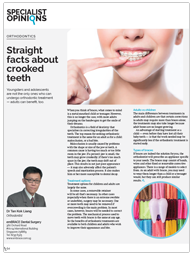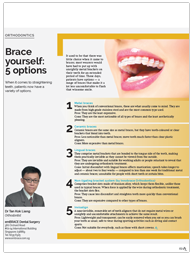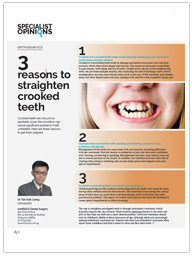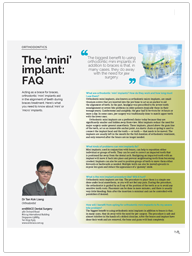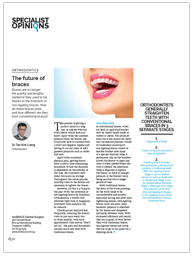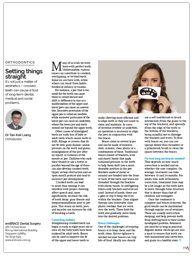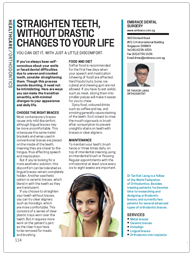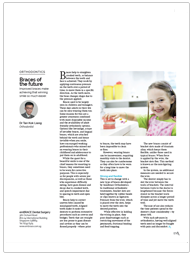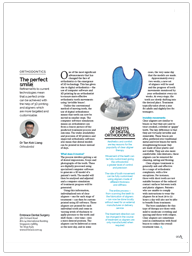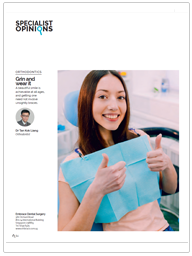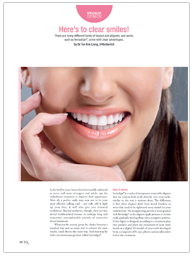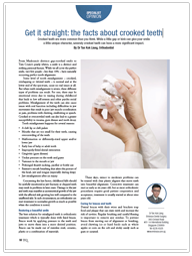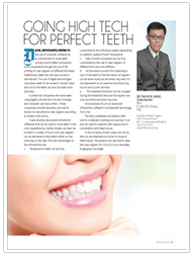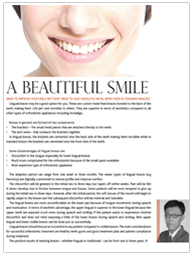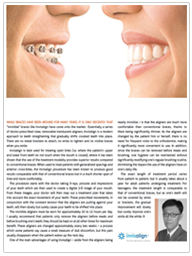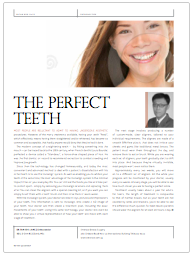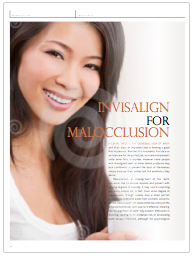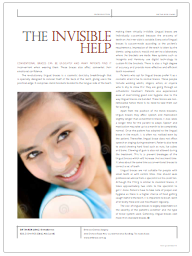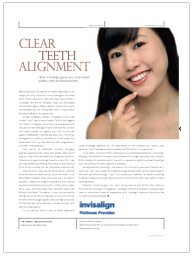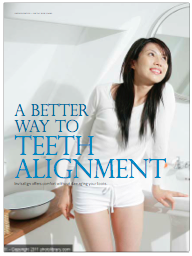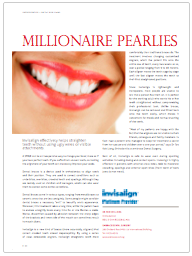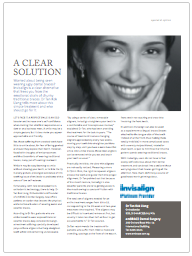A BEAUTIFUL SMILE IS ACHIEVABLE AT ALL AGES, AND GETTING ONE NEED NOT INVOLVE UNSIGHTLY BRACES.
Inside job
Lingual braces are custom-made fixed braces that are bonded to the back of the teeth. This means that, unlike conventional braces, they are invisible when you smile. Lingual braces offer superior aesthetics compared to all other types of orthodontic appliances, including those that use transparent aligners.
They work very much like conventional braces in that they are made up of two components: brackets and arch wires. The brackets are small metal pieces that are attached directly on to the teeth. Arch wires connect the brackets and allow the whole set to be adjusted.
In lingual braces, the brackets are cemented to the back of the teeth unlike standard braces that are cemented to the front.
The key advantage of lingual braces is that they are just as effective as conventional braces, but offer a more aesthetically pleasing look. There are some disadvantages, however. Lingual braces are more complicated to put in place and adjust, more expensive and can cause discomfort to the tongue.
Making your new braces
The first step to making new braces is to get your teeth and mouth thoroughly checked to make sure that the braces are suitable. The Singapore orthodontist will take a set of accurate and detailed impressions of the upper and lower teeth, and these will form the basis to create the hardware (brackets and wires). A detailed prescription outlining the final alignment outcome is also written up. Using the impressions and with reference to the final desired outcome, the orthodontic laboratory will make casts and then modify them to match a plan of teeth arranged in perfect alignment. All this is scanned into a computer and a programme will then start to make your customised orthodontic brackets.
The completed brackets will be embedded into an applicator tray which is custom-made to fit over your teeth and hold your brackets in precise alignment.
To place your brackets, the orthodontist will first prepare the surface of your teeth for the bonding process. A special cement is also applied to each of the brackets. The whole applicator tray is then fitted over your teeth to bond all the brackets simultaneously. One the bond is set, the applicator tray is removed and any excess bonding is scraped off. The pre-bent arch wires are then installed.
Caring for your new smile
Achieving a brand new smile with braces does have its challenges. For most, the greatest discomfort is felt in the first few days. The sensation of tightness and the new friction of the tongue against the braces can cause ulcers initially, but the tissues of the mouth typically adapt rapidly to the braces. Most people adjust to their new lingual braces in a few weeks or months. For some, the lingual braces on the lower jaw can lead to some problems speaking and chewing. One option for some is to use lingual braces on the upper jaw and visible braces on the lower jaw. New types of lingual braces are also making the adaptation period shorter as the braces can now be digitally customised to ensure a better fi t and greater comfort. Low profile brackets can be as thin as 1.5mm compared to the 3.55mm of older style ones.
In the initial days of fitting your braces, it is helpful to eat softer foods to help in the transition. These include soups, porridge, yoghurt, shakes or smoothies and other easy-to-chew foods. Some types of food must be avoided totally to prevent the brackets from becoming dislodged or misaligned, and these include sticky, stringy or hard foods such as gum and toffee, raw carrots, nuts or hard candy. Avoid foods like popcorn that can become trapped between the teeth. Remember not to use your front teeth for foods such as apples, carrots, corn-on-the-cob, celery, chicken wings, drumsticks and spare ribs. Cut these up into small bite-sized pieces so that you can chew with the back molars.
Caring for your new smile is also important. Wearing lingual braces can typically make it more difficult to brush and floss your teeth. But with braces, it is even more important to clean the teeth and braces after every meal and snack. You may need some time to get used to brushing your teeth more carefully to clean them without dislodging the brackets and wires. Use a soft toothbrush to brush downwards (from the gums to the top of the brackets), then upwards (from the edge of the teeth to the bottoms of the brackets). To fl oss with braces, feed one end of the floss through the space between the main arch wire and the upper portion of the tooth closest to the gum and use a gentle sawing motion to work the floss between the teeth. Use a proxabrush or “Christmas tree” brush to clean the spaces between the braces.
Wearing braces of any kind involves commitment and staying power. You will need to change the way you do certain things, like eating and cleaning your teeth, but if you stay the course, you will be rewarded with your best smile.

